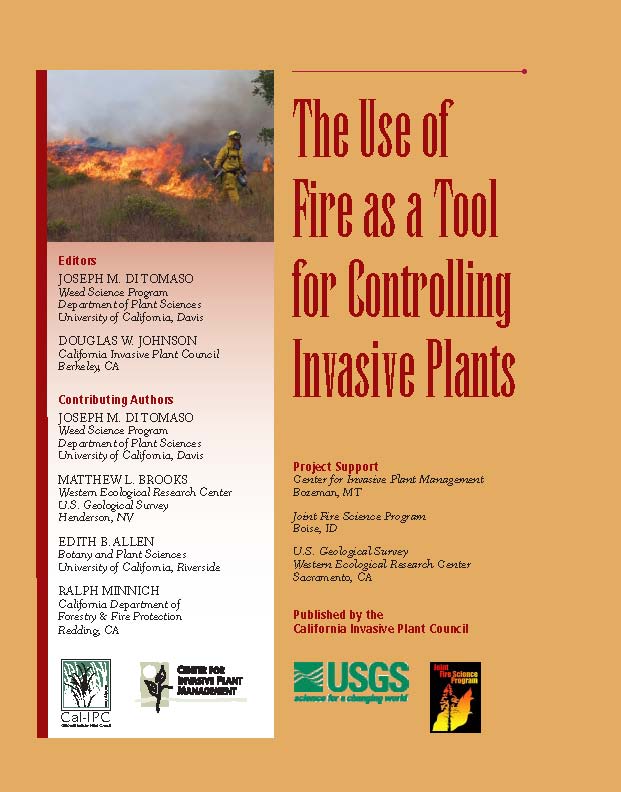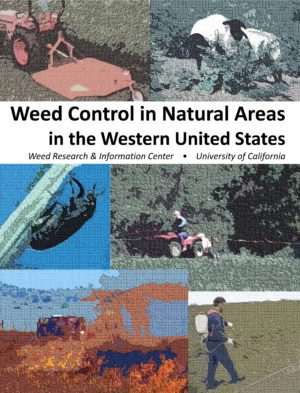$0.00
Out of print. Download a free PDF of Use of Fire as a Tool for Controlling Invasive Plants.
By Joseph M. DiTomaso, Matthew L. Brooks, Edith B. Allen, and Ralph Minnich
Edited by Joseph M. DiTomaso and Douglas W. Johnson
2006 by the California Invasive Plant Council
49 pages, color photographs throughout
This report captures the current state of knowledge on the use of fire to manage invasive plants in wildlands, so that better information can facilitate improved decision making when considering the use of prescribed burning for the management of invasive plants.
SHOP HOME | BOOKS, REPORTS, VIDEOS & DIGITAL | BROCHURES | CAL-IPC GEAR | CART
Out of stock
Description
Fire is one of the oldest tools used by humans to manage vegetation. Its use can be traced back to pre-historic times when it was used to manipulate vegetation to improve opportunities for hunting wildlife and to increase production of plant species that were used for food, textiles, shelter, and other practical applications. Modern use of fire in wildland areas increased during the latter part of the 1900s. “Prescribed fire” has been used to reduce hazardous fuel loads, restore historical disturbance regimes, improve forage and habitat for game and livestock species, and promote biodiversity. In some cases, fire has also been used to manage invasive plant species. Much of what we currently know about using fire to manage vegetation-and to control invasive plant species in particular-has been derived from studies of cropland systems. However, there are many fundamental differences between cropland and wildland settings, and our ability to use effects observed in croplands to predict effects that may occur in wildlands is limited. Some of these fundamental differences include the timing of fires, fuel types, fire types, other treatments that come before or after burning, and the types of invasive plants that are targeted.
The goal of this report is to capture the current state of knowledge on the use of fire as a tool to manage invasive plants in wildlands. By providing a more thorough source of information on this topic, we hope this review facilitates improved decision making when considering the use of prescribed burning for the management of invasive plants.
Contents
- Planning and Implementing Prescribed Burns
- Control of Invasive Plant with Prescribed Fire
- Using Prescribed Burning in Integrated Strategies
- Effects of Fire on Plant Communities
- Effects of Fire on Chemical, Physical, and Biotic Properties of Soil
Project Support
Center for Invasive Plant Management Bozeman, MT
Joint Fire Science Program Boise, ID
U.S. Geological Survey
Western Ecological Research Center Sacramento, CA





